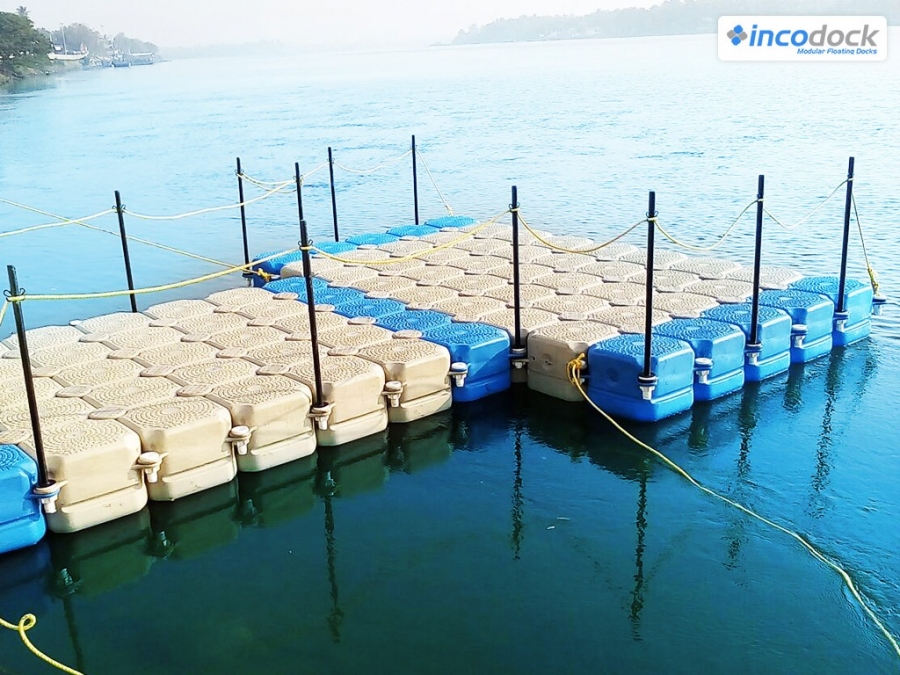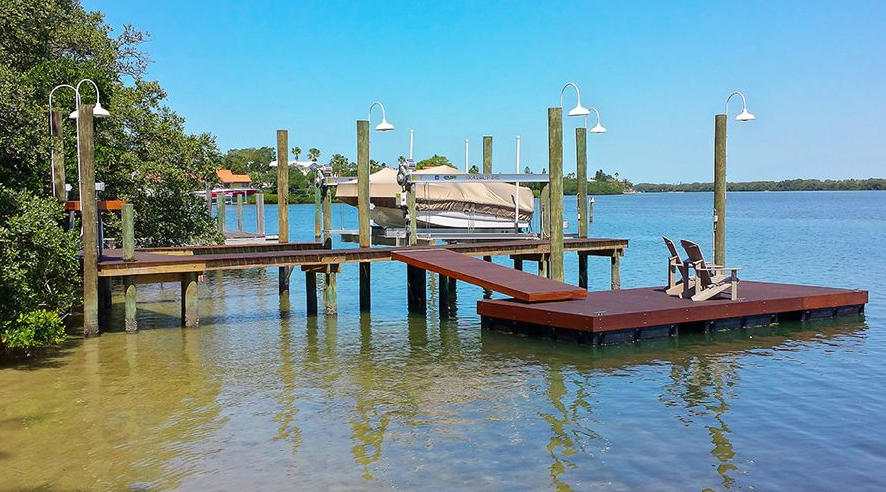Benefits of Dealing With a Developed Floating Dock Company for Satisfaction
Benefits of Dealing With a Developed Floating Dock Company for Satisfaction
Blog Article
Upgrade Your Beachfront With Long Lasting Floating Docks
Upgrading your beachfront with durable floating docks can dramatically enhance both performance and visual appeals, supplying a functional solution for different water tasks. With a range of materials offered, including low-maintenance choices and typical wood, picking the best dock can complement your individual style and fulfill functional needs.
Benefits of Floating Docks
Floating docks deal a wide range of advantages that enhance their charm for different maritime applications. One of the primary benefits is their adaptability to changing water degrees - floating docks. Unlike traditional set docks, floating docks rise and fall with the trend, making certain regular availability for boats and watercraft despite ecological problems. This function considerably reduces the threat of damages to vessels, as they stay securely moored also throughout fluctuations in water depth.
Additionally, floating docks are easier to relocate and set up, offering flexibility for seasonal or short-lived usage. Their modular layout permits customization to fit certain requirements, whether for exclusive marinas, property waterfronts, or business applications.
Moreover, floating docks create marginal disturbance to the water setting, protecting local ecosystems and minimizing the possibility of erosion. They likewise give enhanced security and security for users, as their buoyant nature supplies a more flexible surface area than rigid frameworks.
In addition, floating docks can help with a varied variety of tasks, such as angling, swimming, and entertainment boating, making them a beneficial asset for waterside advancement. Their adaptability and usefulness make floating docks a recommended choice for a variety of maritime projects.
Choosing the Right Materials
Choosing proper products for floating docks is crucial to their long life, efficiency, and total performance. When picking products, take into consideration variables such as ecological direct exposure, maintenance requirements, and structural integrity. Usual materials include wood, plastic, light weight aluminum, and composite options, each offering distinct advantages and drawbacks.
Wood, while aesthetically pleasing, requires normal upkeep to protect against rot and degeneration. Pressure-treated timber can improve toughness, however it may still catch water damage over time. Plastic drifts, usually made from high-density polyethylene, are immune to rust and need minimal maintenance, making them an eye-catching option for low-maintenance applications.
Aluminum is another sensible alternative, recognized for its stamina and lightweight homes. It is resistant to corrosion and can stand up to severe weather problems, although it might be much more pricey than various other materials. Compound products integrate the most effective features of timber and plastic, providing a resilient and low-maintenance option that imitates the look of wood without the linked disadvantages.
Inevitably, the option of material must align with the planned use, ecological considerations, and spending plan restrictions, ensuring a durable and practical floating dock that satisfies your specific requirements.
Installment Process Review
The successful setup of a floating dock depends on mindful planning and implementation, ensuring that it runs properly in its designated setting. The primary step involves analyzing site problems, including water depth, coastline features, and prevailing weather condition patterns, which will educate the dock style and anchoring system.
Adhering to the website assessment, the following stage is to prepare the floating dock elements. This consists of putting together the structure, securing floats, and affixing any needed equipment. It is essential to make sure that all links are robust and waterproof to stand up to aquatic problems.
As soon as the dock is assembled, the installation process commences with positioning the dock in the water. This can include a crane or other lifting devices, particularly for larger structures. Appropriate positioning is necessary for performance and safety and security.

Maintenance Tips for Durability
Normal maintenance is essential for making sure the durability and optimum performance of a drifting dock. To accomplish this, start with routine examinations at least two times find a year, focusing on the honesty of the dock's structure, consisting of the flotation gadgets and attaching hardware. Seek signs of wear, damages, or corrosion, and address any type of issues quickly to avoid additional damage.
Cleaning is one more critical element of upkeep. Remove debris, algae, and barnacles from the dock's surface to avoid slippery conditions and preserve visual allure. Use a soft brush and a mild cleaning agent to avoid damaging the dock's products.
Additionally, make sure that the dock is effectively anchored and secured to stand up to seasonal adjustments in water levels and weather condition problems. Check the anchoring system for stability additional reading and make adjustments as needed.
Enhancing Your Exterior Visual
To create a visually attractive outside room, incorporating a floating dock can considerably improve the total visual of your beachfront residential property. Floating docks are not just useful yet can additionally function as a striking centerpiece that matches the natural environments - dock company. Readily available in numerous products and layouts, these docks can be personalized to match your residential property's building design and landscape
The enhancement of attractive aspects, such as incorporated illumination or elegant barriers, additionally elevates the dock's visual allure. Take into consideration making use of all-natural wood surfaces, which blend perfectly with the environment, or going with modern materials like light weight aluminum or composite decking that offer a sleek, modern look.
Strategically placing planters or seating locations on or around the dock can produce inviting rooms that urge relaxation and enjoyment of beachfront views. In addition, integrating colors and appearances that balance with your landscape will develop a natural visual throughout your outside location.

Verdict

Updating your beachfront with resilient floating docks can considerably boost both functionality and appearances, offering a functional view solution for different water tasks. Unlike traditional fixed docks, floating docks rise and autumn with the trend, ensuring constant access for boats and watercraft no matter of ecological problems.Selecting suitable products for floating docks is vital to their durability, efficiency, and total performance.Once the dock is put together, the setup procedure starts with placing the dock in the water.In recap, floating docks offer various benefits, consisting of flexibility to water degree changes and a variety of material options.
Report this page